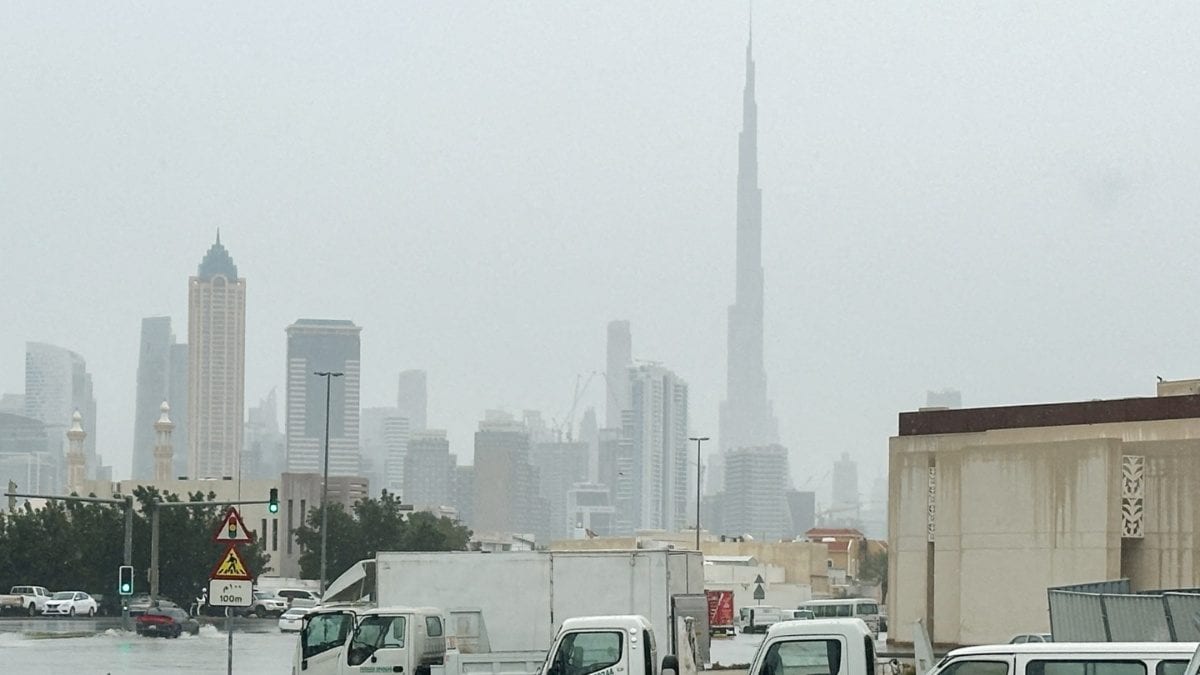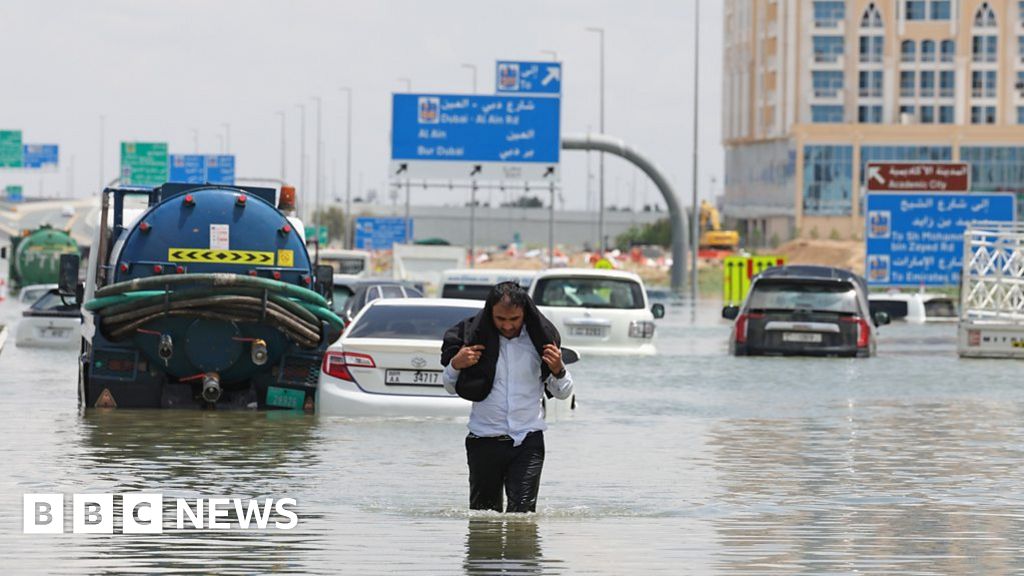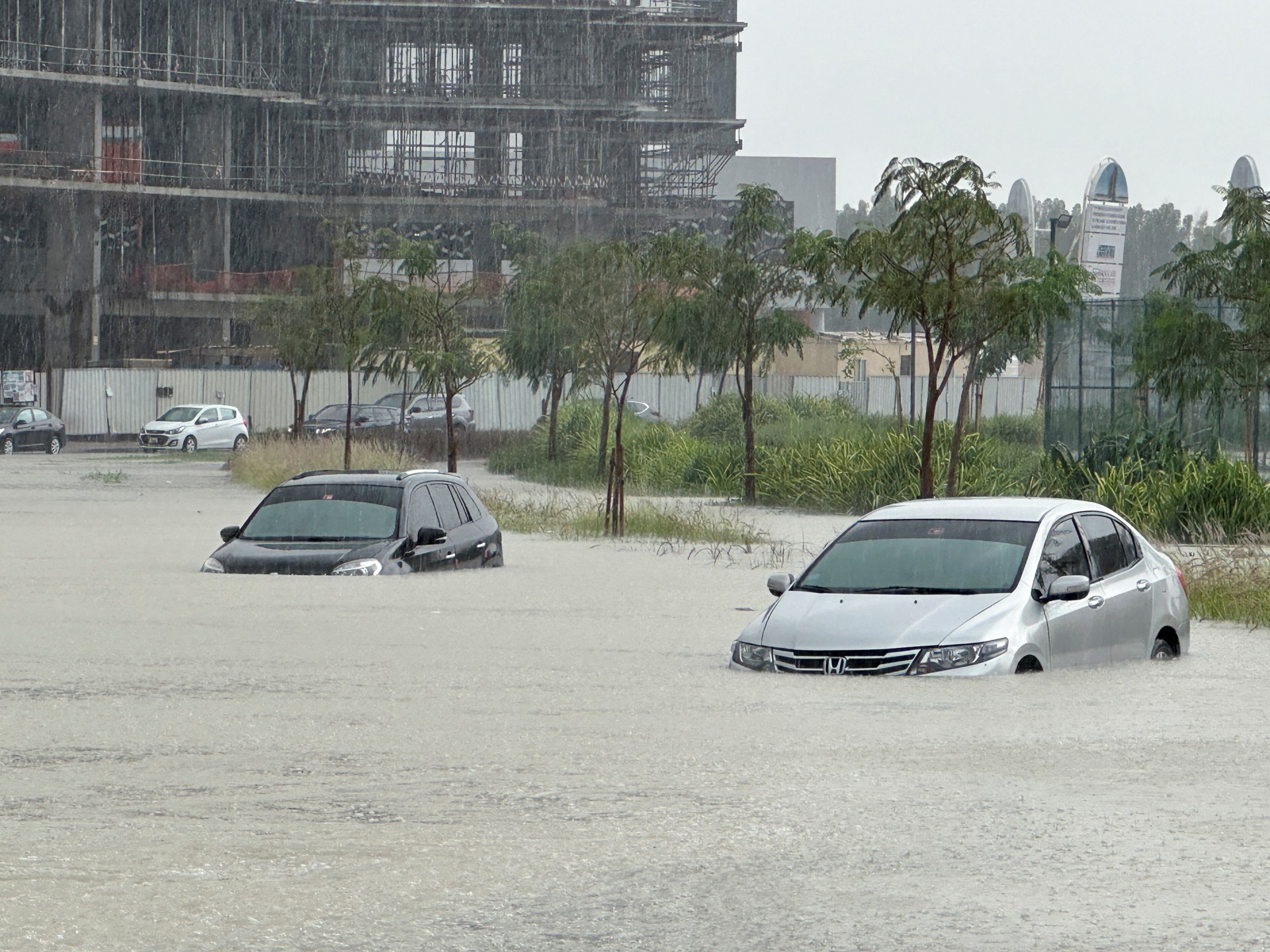Dubai was hit heavy rains on April 16, 2024. What began as an unusual rain turned into a catastrophe, flooding roads, affecting transportation systems, and flooding infrastructure across the city and the wider United Arab Emirates (UAE).

Also Read: Ocean Heat is Driving Global Coral Bleaching for Fourth Time
The storms that lashed the UAE on Tuesday dumped over a year and a half’s worth of rain on Dubai, according to reports.
The heavy downpour resulted in major roadways, airports, and the city’s driverless metro rail system being submerged.
Videos circulating on social media depicted planes taxiing on flooded runways, while access roads leading to the airport were also inundated.
Key infrastructure including flagship shopping centers like Dubai Mall and Mall of the Emirates, experienced flooding, with ankle-deep water reported in at least one Dubai Metro station.
Roads collapsed, residents were submerged, and leaks were observed in various households. The International Airport saw a rare suspension of arrivals, followed by a gradual resumption 25 minutes later.
Flight operations encountered delays and cancellations. In total, 79 flights to Dubai, including 15 from India, were canceled, while 178 flights were delayed and 10 flights were diverted.
Departures from the airport were also affected, with 90 flights from Dubai and 13 to India canceled, along with 152 delayed.
While no deaths were reported, one person died in Ras al-Khaimah, the country’s northernmost emirate, when his vehicle was swept away by floodwater.
In neighboring Oman, at least 18 people, including children, lost their lives due to flash floods. Authorities in both countries launched rescue efforts with tanker trucks deployed to pump away water from flooded streets and highways.
Friederike Otto, a climatologist and Professor at the Grantham Institute for Climate Change addressed the role of human-induced climate change in extreme weather events.
Cloud seeding, a technique used to enhance rainfall was cited as a possible contributing factor to the heavy rains.
Also Read: Afghanistan Floods: 33 Killed, 27 Injured and 600 Houses Damaged
The UAE government issued warnings urging employees to work from home and leave only in cases of extreme necessity.
All federal employees were asked to work remotely until Wednesday. Private schools were closed, and remote learning was advised.
The city saw a huge amount of rainfall with some areas experiencing over a year’s worth of rain in just 24 hours.
The typically dry city received more than 142 millimeters of rainfall, far surpassing its average annual rainfall of 94.7 millimeters.
Fujairah, another emirate in the UAE saw even heavier rainfall with 145 millimeters recorded. Dubai International Airport was severely affected, with runways submerged and flight operations disrupted.
Major roadways, including the iconic Sheikh Zayed Road, turned into rivers, stranding motorists and causing extensive traffic jams.
Landmarks such as the Mall of the Emirates and the Dubai Metro station were flooded, leading to property damage and logistical challenges.
While no deaths were reported in Dubai, the neighboring emirate of Ras al-Khaimah saw a fatality when a 70-year-old man was swept away by floodwaters.
In Oman, where the storms initially struck, at least 18 people lost their lives, including 10 schoolchildren engulfed by flash floods.
While cloud seeding a weather modification technique was deployed to enhance rainfall, the underlying cause of the precipitation was linked to climate changes.
Neighboring countries such as Bahrain, Qatar, and Saudi Arabia also experiencing flooding and disruption.
Also Read: Storm Kathleen: 70 Flights Cancelled as Storm Hits UK





















